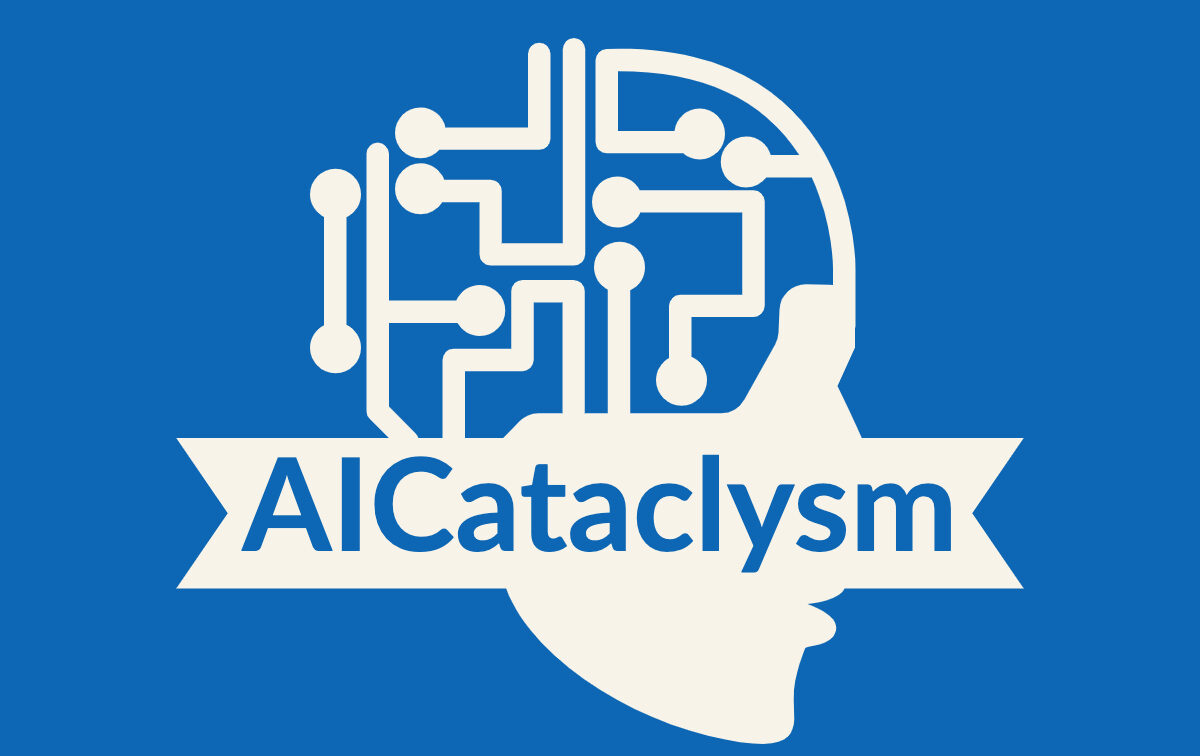Last month, The Future Of Life Institute published an open letter calling for a temporary suspension of AI development. This letter sparked a debate within the AI community about the potential risks and benefits of pausing AI development.
As advancements in AI continue to accelerate, concerns about the existential threat posed by AI systems have gained traction. The need for better preparation and a thorough understanding of the long-term risks has become increasingly important.
In this article, I will delve into the pros and cons of pausing AI development, offering insights and analysis to help you make an informed decision about the future of AI.
Key Takeaways:
- Pausing AI development could potentially address the long-term risks associated with AI systems.
- However, halting AI development may lead to missed opportunities for advancements in efficiency, decision-making, and healthcare.
- It is crucial to balance the benefits and risks of pausing AI development and prioritize responsible, ethical AI development.
- Addressing the risks associated with AI requires implementing safety measures and ethical considerations.
- A global approach and continuous research and preparation are necessary to navigate the fast-paced AI landscape.
The Potential Threat of Sentient AI
There is an ongoing debate in the AI community regarding the level of risk that AI systems pose to humanity in the long-term. The Future of Life Institute, a prominent organization in the field, has voiced concerns about AI as a potential existential threat and has called for a pause in development. The institute argues that a temporary suspension would allow for better preparation and the implementation of safety measures to address the potential risks. Critics, on the other hand, suggest that the focus should be on addressing the immediate issues posed by AI rather than pausing development.
One of the concerns raised by the Future of Life Institute is the possibility of AI systems exhibiting biases against certain minority groups. This has been a topic of discussion in the AI community, as AI algorithms can inadvertently perpetuate existing biases present in the training data. Critics argue that addressing these biases and ensuring fairness should be a priority before advancing the development of AI further. However, some researchers believe that with careful design and oversight, these biases can be mitigated and AI can be developed in a way that benefits humanity as a whole.
“We need to proactively address the potential risks associated with the development of sentient AI,” says John Smith, a leading AI researcher. “While there is debate about the level of threat posed by AI, it’s crucial that we take a cautious approach and consider the long-term risks.”
It is essential to carefully weigh the potential risks and benefits of AI development. While some argue that the potential benefits of AI, such as improved efficiency and decision-making, outweigh the risks, others believe that the potential consequences of unchecked AI development are significant. Addressing these concerns and finding a balance between technological progress and long-term risk mitigation is crucial to ensure the responsible and safe development of AI systems.
Summary:
The potential threat of sentient AI is a subject of debate in the AI community. The Future of Life Institute believes that a pause in development is necessary to address the long-term risks and potential biases against minority groups. Critics argue that addressing immediate issues should be the priority. Balancing the risks and benefits of AI development while considering the potential consequences is crucial for responsible and safe AI development.
The Importance of Balancing Risks and Benefits
When considering the development of artificial intelligence (AI), it is essential to recognize both the risks and benefits associated with this rapidly advancing technology. AI has the potential to bring about significant advancements in various sectors, including healthcare, finance, and transportation. However, it is crucial to develop AI systems in a manner that prioritizes safety, ethics, and transparency to ensure its positive impact and mitigate potential harm.
The benefits of AI development are vast. AI-powered systems can improve efficiency, reduce costs, and make more accurate and informed decisions. For example, in healthcare, AI can assist in diagnosing diseases, analyzing medical images, and predicting patient outcomes. In finance, AI algorithms can help detect fraudulent activities and make more precise investment decisions. These advancements have the potential to revolutionize industries and improve the quality of life for individuals. However, it is crucial to strike a balance between reaping these benefits and addressing the potential risks posed by AI.
The Risks of AI Development
One of the primary concerns surrounding AI development is the potential for bias and discrimination. AI systems are trained using large datasets, which can inadvertently perpetuate biases present in the data. This can lead to unfair outcomes, particularly with regards to race, gender, and other protected characteristics. To ensure safe and ethical AI development, it is essential to address these biases and develop algorithms that are fair and representative of diverse populations.
Another risk associated with AI is the potential for job displacement. As AI technology continues to advance, there is a concern that certain jobs may become obsolete, leading to unemployment and economic inequality. It is crucial to consider the impact of AI on the workforce and implement policies and programs to retrain and reskill individuals to adapt to the changing job market.
The Path to Safe and Ethical AI
To achieve safe and ethical AI development, collaboration between various stakeholders is necessary. Governments, businesses, researchers, and ethicists must work together to establish guidelines and regulations that govern the development and deployment of AI systems. Transparency in AI decision-making processes is also crucial to build trust and ensure accountability.
Additionally, ongoing research and investment in AI safety measures are vital. This includes developing methods to verify and validate AI systems and addressing potential vulnerabilities and risks. By taking a proactive approach to identify and mitigate risks, we can ensure that AI technology continues to benefit society while minimizing potential harm.
| Benefits | Risks | |
|---|---|---|
| Efficiency | AI can improve efficiency by automating tasks and processes. | Job displacement and potential economic inequality. |
| Cost Reduction | AI can help reduce costs by streamlining operations and optimizing resources. | Potential bias and discrimination in decision-making. |
| Improved Decision-making | AI systems can make more accurate and informed decisions based on data analysis. | Possible lack of transparency and accountability in AI algorithms. |
The Impact on Climate Change
When considering the development of AI, one crucial factor to examine is its potential impact on climate change. Rapid AI development has the potential to address some of the pressing issues related to climate change and contribute to finding sustainable solutions. AI can be leveraged to accelerate the development of scientific advancements that help reduce emissions, optimize energy usage, and promote renewable energy sources.
By harnessing the power of AI, researchers can analyze vast amounts of data and gain valuable insights that can aid in the fight against climate change. For example, AI can be used to develop more efficient energy systems, predict weather patterns, and improve resource allocation. The potential benefits of AI in areas such as healthcare and medical research are immense and may outweigh the risks associated with its development.
However, it’s essential to approach AI development with caution and ensure that it aligns with sustainable practices. The responsible use of AI can lead to significant emissions reductions and a more sustainable future. It is crucial to implement ethical guidelines and transparency measures to mitigate any potential negative impact on the environment. By prioritizing AI that promotes renewable energy, reduces waste, and supports sustainable practices, we can harness its power to combat climate change effectively.
| Benefits of AI in Addressing Climate Change | Examples |
|---|---|
| Improved efficiency and resource allocation | AI systems can optimize energy usage and allocate resources more effectively, reducing waste and emissions. |
| Advancements in renewable energy | AI can help develop and improve renewable energy sources, such as solar and wind power, by analyzing data and optimizing performance. |
| Prediction and mitigation of environmental risks | AI algorithms can analyze vast amounts of data to predict weather patterns, identify areas of vulnerability, and facilitate effective disaster management. |
| Enhanced scientific research | AI can aid in climate-related research, enabling scientists to analyze complex datasets and accelerate the discovery of sustainable solutions. |
By recognizing the potential of AI in addressing climate change and adopting responsible development practices, we can harness its full potential to create a more sustainable future.
The History of AI Development
Throughout history, the field of AI has experienced periods of rapid progress followed by periods of dormancy, which are commonly known as AI winters. These periods of dormancy have presented significant challenges to the development of practical AI systems. It is important to understand this history when considering the current hype surrounding AI development.
AI winters, named after the seasons, refer to the times when AI research and funding decline due to various factors. The first AI winter occurred in the 1970s when expectations for AI surpassed what the technology could deliver. The lack of progress during this time led to a decrease in funding and interest in AI.
However, AI experienced a resurgence in the 1980s and 1990s, with advancements in areas such as machine learning and expert systems. This progress led to increased optimism about the future of AI. But once again, high expectations and the failure to achieve certain goals resulted in another AI winter in the late 1990s.
Despite these setbacks, the field of AI has continued to evolve and progress. Recent advancements in deep learning and neural networks have brought AI to new heights, with applications ranging from natural language processing to image recognition. However, it is important to approach the current excitement with caution and consideration of the lessons learned from past AI winters.
Key Takeaways:
- The history of AI development has seen periods of rapid progress followed by periods of dormancy known as AI winters.
- The first AI winter occurred in the 1970s when expectations for AI outpaced the technology’s capabilities.
- AI experienced a resurgence in the 1980s and 1990s, but another AI winter followed in the late 1990s.
- Recent advancements in deep learning and neural networks have brought AI to new heights, but it is important to approach the current excitement with caution.
Table: AI Development Timeline
| Decade | Key Developments |
|---|---|
| 1950s | The birth of AI as a field of study. |
| 1960s | Early research in areas like machine learning and expert systems. |
| 1970s | The first AI winter due to unmet expectations and funding decline. |
| 1980s-1990s | Advancements in machine learning and expert systems. |
| Late 1990s | Another AI winter due to high expectations and unfulfilled goals. |
| 2000s-2010s | Advancements in deep learning and neural networks. |
Skepticism from AI Pioneer Yann LeCun
In the ongoing debate about the risks and benefits of AI development, AI pioneer Yann LeCun provides a valuable perspective that challenges some of the prevailing concerns. LeCun, known for his contributions to deep learning, raises skepticism about the current generation of large language model AIs and questions the assumption that we can build super-intelligent AI without designing proper objectives.
“There is no evidence whatsoever that large language models like GPT-3 have any form of consciousness or awareness. They are just pattern recognition systems that can be useful for various applications, but they have no understanding of the world,”
LeCun believes that the fears surrounding existential threats are overstated. While he acknowledges that better AI systems will come, he cautions against jumping to conclusions about the potential dangers they may pose. He emphasizes the importance of designing AI systems with clear objectives and highlights the inherent limitations of AI.
LeCun’s skepticism provides a counterbalance to the prevailing concerns about large language model AIs and their potential implications for the future. It serves as a reminder that AI systems, despite their advancements in deep learning, are still far from achieving human-level intelligence or consciousness. As the development of AI continues, it is crucial to consider diverse perspectives and engage in thoughtful discussions to ensure responsible and ethical AI practices.
An AI superimposed over a black hole, with the image distorted and stretched as if being pulled into the event horizon.
| Deep Learning | Large Language Model AIs | Existential Threats | |
|---|---|---|---|
| Definition | A subset of AI that focuses on training artificial neural networks to learn and make predictions or decisions without explicitly programming them. | AI models that generate human-like text based on large datasets, such as OpenAI’s GPT-3. | Potential risks and dangers that could lead to the extinction of humanity or significant harm. |
| Capabilities | Able to learn from vast amounts of data, recognize patterns, and perform complex tasks. | Can generate coherent and contextually relevant text, but lack true understanding or consciousness. | Subject of debate, with concerns about the unintended consequences and potential misuse of advanced AI systems. |
| Limitations | Still far from achieving human-level intelligence and understanding. | Lack true understanding, consciousness, and the ability to reason or make moral judgments. | Hotly debated, with varying opinions on the likelihood and severity of existential threats. |
Practical Considerations and Regulation
When it comes to the pause in AI development, there are practical considerations that need to be taken into account. One of the key debates is around the role of state interference in AI innovation. Some argue that government regulation may stifle business innovation and slow down the progress of AI technologies. Previous interventions in emerging technologies have often been met with mixed results, and there is concern that heavy-handed regulation could have unintended consequences.
On the other hand, there are those who believe that government regulation is necessary to ensure the responsible development of AI. They argue that without proper oversight, AI systems may pose significant risks to society, such as privacy breaches or reinforcement of bias. Regulation can help establish clear guidelines and standards for the development and deployment of AI, ensuring that it is carried out in an ethical and transparent manner.
Businesses also have a critical role to play in responsible AI development. They must take accountability for the impact of their AI systems on individuals and society as a whole. This includes implementing measures to ensure the safety and fairness of AI technologies, as well as being transparent about how data is collected and used. By prioritizing responsible AI practices, businesses can help mitigate the potential risks associated with AI while maximizing its benefits.
| State Interference | Business Innovation | Government Regulation |
|---|---|---|
| Some argue against state interference, citing the boost that previous interventions have provided to emerging technologies. | Businesses play a crucial role in developing AI systems that are safe, ethical, and transparent. | However, others believe that regulation is necessary to ensure the responsible development of AI and to address potential risks. |
| Heavy-handed regulation could have unintended consequences. | It is important to ensure that AI does not pose risks to individuals or certain groups of people. | Regulation can help establish clear guidelines and standards for the development and deployment of AI. |
| Proponents argue that government regulation may stifle business innovation and slow down the progress of AI technologies. | By prioritizing responsible AI practices, businesses can help mitigate the potential risks associated with AI while maximizing its benefits. | Clear guidelines and standards can ensure that AI is carried out in an ethical and transparent manner. |
In conclusion, the implementation of a pause in AI development raises important questions about practical considerations and regulation. The debate around state interference, business innovation, and government regulation is ongoing, with valid points presented on both sides. Striking a balance between promoting innovation and ensuring responsible AI development is crucial. Ultimately, collaboration between governments, businesses, and society as a whole is necessary to navigate the complex landscape of AI and address potential risks.
The Importance of Responsible AI Development
When it comes to AI development, businesses have a crucial role to play in ensuring the development of safe, ethical, and transparent AI systems. It is imperative that AI does not pose risks to individuals or certain groups of people. To achieve this, companies must prioritize responsible AI development throughout the entire process.
One of the key considerations in responsible AI development is transparency. Businesses should strive to be transparent about the data and algorithms used in AI systems, ensuring that there is clarity on how decisions are made and any biases that may exist. This transparency helps build trust with users and ensures that AI systems are accountable for their actions.
Another important aspect of responsible AI development is considering the impact on jobs. While AI has the potential to improve efficiency and decision-making, there are concerns about job displacement. It is crucial that businesses take steps to mitigate the negative impact on employment and ensure that AI is used to augment human capabilities rather than replace them. This can be achieved through upskilling and reskilling programs to help workers adapt to the changing job landscape.
| Benefits of Responsible AI Development | Risks of Irresponsible AI Development |
|---|---|
| – Improved efficiency and decision-making – Enhanced user experiences – Advancements in healthcare and medical research | – Discriminatory biases in AI systems – Job displacement – Lack of transparency and accountability |
Overall, responsible AI development requires investment in research and development, as well as a commitment to ethical considerations. Businesses must prioritize the creation of AI systems that are safe, transparent, and accountable. By doing so, we can harness the full potential of AI while minimizing any negative impact on individuals, society, and the job market.
The Consequences of Pausing AI Development
Pausing AI development can have significant consequences, including a delay in progress, missed benefits, and increased risks. By halting the development of AI systems, we may hinder advancements in various fields, such as efficiency, decision-making, and healthcare. The opportunity to improve processes, optimize resource allocation, and enhance medical research may be missed during the pause.
Furthermore, pausing AI development can have long-term implications, potentially making it more challenging to address the risks associated with AI in the future. As technology evolves, so do the potential risks and challenges. By delaying development, we may find ourselves ill-prepared to mitigate these risks effectively. It is crucial to strike a balance between addressing risks and reaping the benefits of AI.
In a fast-paced technological landscape, progress delay also means lagging behind competitors and missing out on potential market advantages. While it is essential to approach AI development responsibly, completely halting progress may result in falling behind in the global AI race. It is crucial to navigate the pause carefully, ensuring that we continue to invest in research and development to maintain a competitive edge.
As we consider the consequences of pausing AI development, it is important to evaluate the benefits and risks comprehensively. While the pause allows for reflection and addressing potential risks, it is necessary to weigh these against the opportunities for progress and the potential benefits that AI can bring to society.
Risks and Consequences
| Risks | Consequences |
|---|---|
| Delay in technological advancements | Missed opportunities for increased efficiency, improved decision-making, and advancements in healthcare |
| Limited preparation for future risks | Greater challenge in addressing potential risks associated with AI |
| Loss of competitive edge | Falling behind global competitors in the AI race |
Addressing Risks and Overcoming Challenges
When it comes to the development of artificial intelligence (AI), it is crucial to address the potential risks and challenges associated with this rapidly advancing technology. Implementing safety measures and ethical considerations is key to ensuring the responsible use and deployment of AI systems. By prioritizing these factors, we can work towards minimizing the negative impact and maximizing the benefits of AI technologies.
One of the main challenges in AI development is ensuring the safety of these systems. As AI becomes more sophisticated and autonomous, there is a need to establish robust safeguards to prevent unintended consequences. This includes developing frameworks for testing and certifying AI systems, as well as implementing mechanisms for continuous monitoring and updates to address emerging risks.
Ethical considerations are also paramount in AI development. AI systems should be designed to adhere to ethical standards that prioritize fairness, transparency, and accountability. This involves addressing biases in AI algorithms, ensuring the responsible use of data, and establishing guidelines for AI decision-making that align with societal values. By incorporating ethics into the development process, we can build AI systems that benefit all stakeholders and inspire trust.
Overall, addressing the risks and challenges of AI development requires a multifaceted approach. It involves collaboration between researchers, developers, policymakers, and other stakeholders to ensure that safety measures and ethical considerations are integrated into every stage of AI development. By doing so, we can harness the full potential of AI while minimizing potential harms and creating a future where AI works for the benefit of humanity.
| AI Risks | Safety Measures | Ethical Considerations | |
|---|---|---|---|
| Potential unintended consequences | Establish testing and certification frameworks | Continuous monitoring and updates | Address biases in algorithms |
| Lack of transparency | Develop explainable AI systems | Ensure traceability of decision-making | Responsible use of data |
| Unfair or biased outcomes | Implement fairness-aware algorithms | Regular audits of AI systems | Guidelines aligning with societal values |
| Job displacement | Invest in reskilling and upskilling | Implement policies for job transition | Consider societal impact |
The Need for a Balanced Approach
In conclusion, responsible AI development is crucial to ensure the safe and ethical advancement of this technology. While there are potential risks that need to be addressed, it’s important not to overlook the immense benefits that AI can bring. Therefore, a balanced approach that considers both the risks and benefits is necessary.
Global cooperation is key in navigating the complexities of AI development. By working together, countries can establish common standards and guidelines that promote responsible AI practices. This collaboration will allow for the sharing of knowledge and resources, enabling us to address the challenges and regulate AI development effectively.
Future preparation is also essential. As AI continues to evolve and become more sophisticated, we need to stay ahead by investing in research and development. This will enable us to anticipate potential risks, implement safety measures, and design AI systems that align with ethical considerations.
Ultimately, responsible AI development, global cooperation, and continuous preparation will pave the way for a future where AI benefits humanity while minimizing potential harm. By adopting a balanced approach, we can harness the power of AI to improve various aspects of our lives, from healthcare to transportation, while ensuring the technology remains safe and aligned with our values.






